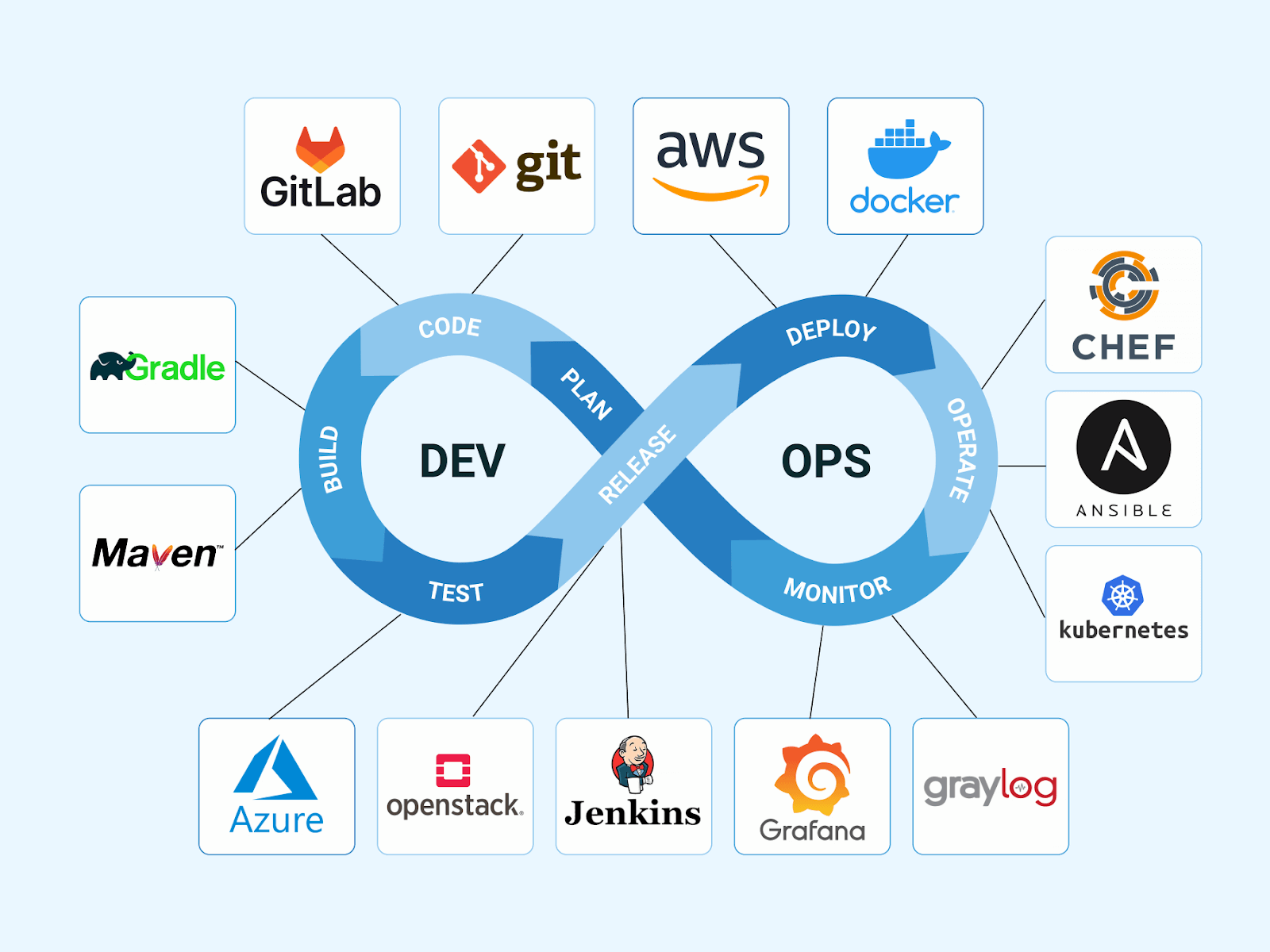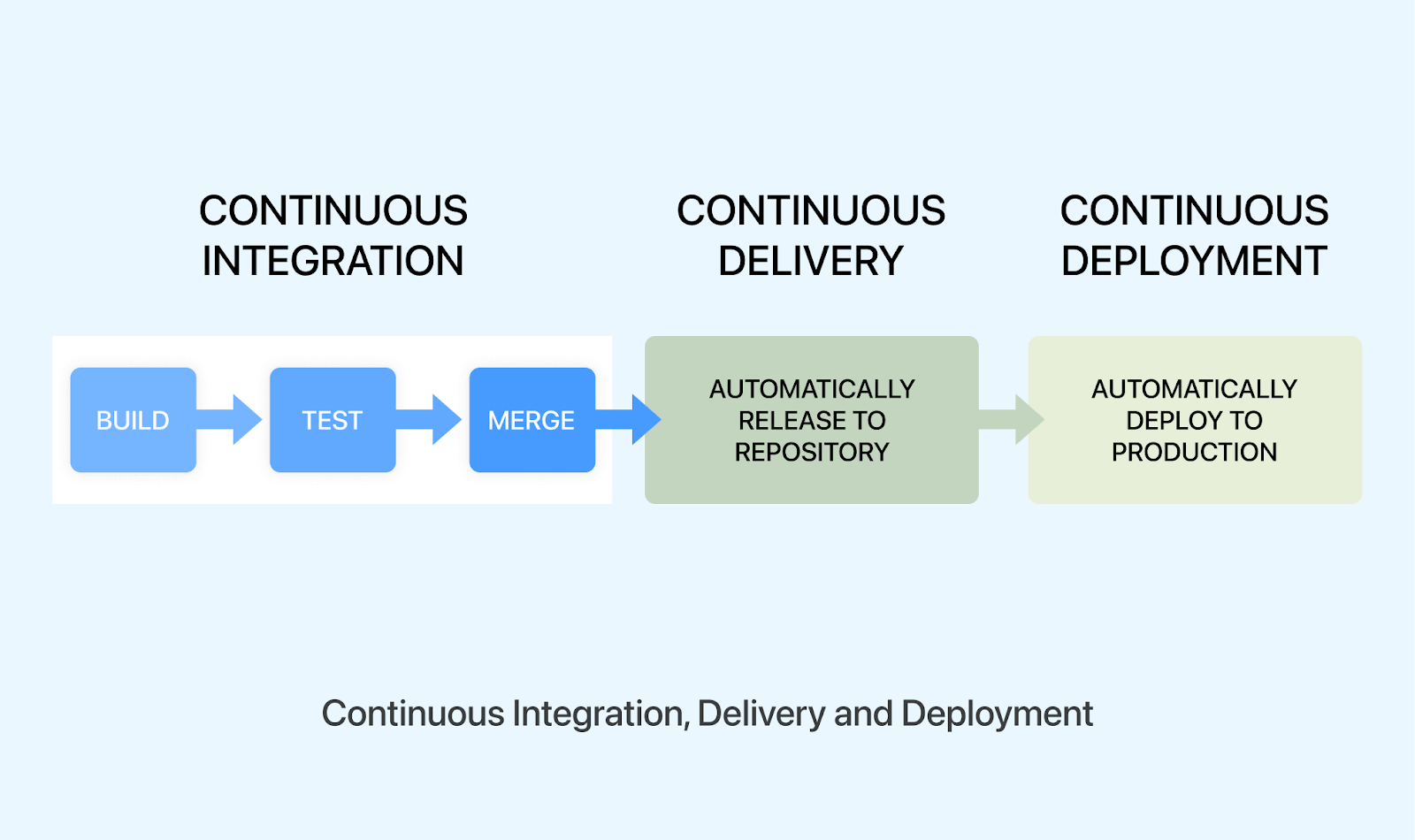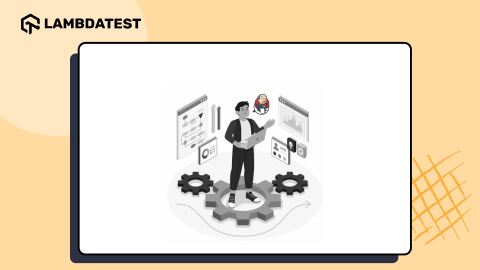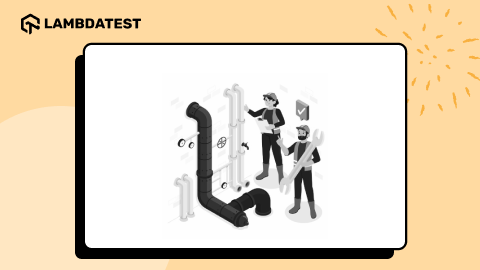DevOps vs CI/CD: Key Differences
Vijay Kumar Kaushik
Posted On: November 27, 2023
![]() 50105 Views
50105 Views
![]() 13 Min Read
13 Min Read
This article is a part of our Content Hub. For more in-depth resources, check out our content hub on CI/CD Testing.
The only constant in life is change. This proverb is true in the software development industry as well. New frameworks and tools are adopted rapidly in the dynamic software development industry. Thus, setting the right expectations and clear communication between the teams and stakeholders is critical in shipping the right products/features to the end user while meeting the delivery timelines and at most quality. To ensure operational flow, DevOps and CI/CD methods come into play.
DevOps and CI/CD are more than just industry jargon; they are catalysts for profound change. They have been instrumental in shaping software development and ensuring it remains efficient, reliable, and responsive.
In this comprehensive guide, we will explore the integral role of DevOps and CI/CD in software development. We will also attempt to answer the DevOps vs CI/CD question. If you are preparing for an interview you can learn more through CI/CD Interview Questions.
TABLE OF CONTENTS
What is DevOps?
DevOps is an idea or philosophy centered around shipping products with high velocity while ensuring at highest quality by employing standard operating practices and tools.
DevOps comprises the terms “Development” and “Operations”. DevOps enables development and operations teams to sync during the software development lifecycle(SDLC) and deliver products to end users quickly and without compromising quality.
DevOps represents a shift in the IT culture mindset. It builds on Agile and Lean practices, focusing on gradual development and swift software delivery. The key to success is creating a culture emphasizing responsibility, better teamwork, empathy, and shared ownership of business results.
Adopting DevOps is not just about using the various tools for the development and operations phases (as shown in the images), but also about getting the right synchronization between teams to work efficiently, resulting in better iterations of feature deliveries. At its core, DevOps is about minimizing waste and creating scalable, durable systems.

The path to DevOps includes several essential principles and practices as follows:
- Collaboration: DevOps fosters collaboration between cross-functional teams, including developers, testers, system administrators, and more. This collaborative approach ensures that everyone collaborates and shares responsibilities, leading to a harmonious development process.
- Automation: Automation is the cornerstone of DevOps. It involves using tools and scripts to automate repetitive tasks, such as code testing, configuration management, and deployment. Automation reduces human error and speeds up processes, making development and operations more efficient.
- Continuous Integration (CI): CI is a practice that involves continuously integrating code changes into a shared repository. The primary goal is to ensure that new code is tested and validated as soon as it’s committed, preventing integration issues and improving code quality.
- Continuous Delivery and Deployment (CD): CD ensures that the code is always deployable, making it ready for manual deployment when needed. Continuous Deployment (CD) goes a step further by automatically deploying code to production when it passes all tests.
- Monitoring and Feedback: DevOps places a strong emphasis on monitoring the performance of software and gathering feedback from users. Monitoring helps in identifying issues, tracking performance, and improving software reliability. User feedback is invaluable for enhancing software features and functionality.
Discover the power of DevOps Automation. Simplify workflows, deploy faster, and boost efficiency.
Improve the performance and reliability of your software with cutting-edge solutions. Stay ahead of the curve by checking DevOps monitoring tools now!
Benefits of DevOps
The following are the benefits of DevOps:
- Faster Delivery: DevOps accelerates the software development and deployment process, reducing the time it takes to go from writing code to deploying it in production.
- Reliability: Continuous monitoring and automation testing improve software reliability, reducing the likelihood of errors and outages.
- Efficiency: Automation reduces manual effort, saving time and resources and making the development and delivery processes more efficient.
- Collaboration: DevOps fosters collaboration among cross-functional teams, leading to better products and services through shared responsibilities and insights.
Challenges in DevOps Adoption
While DevOps offers numerous advantages, it also brings a few challenges, as follows:
- Cultural Change: DevOps often necessitates a cultural shift within organizations. It requires teams to change the way they work and collaborate. Encouraging and sustaining a cultural shift is a crucial but often challenging aspect of DevOps.
- Tool Selection: Choosing the right DevOps tools for your environment can be complex. The vast array of available tools requires careful evaluation to determine the best fit for your organization’s needs.
- Monitoring Complexity: Managing the monitoring of complex systems can be challenging. It involves collecting, analyzing, and acting upon a vast amount of data, which can be overwhelming without the right tools and strategies.
What is CI/CD?
CI/CD, short for Continuous Integration and Continuous Delivery, is a set of principles and practices to ensure the reliable and efficient delivery of frequent code changes as part of the software development process. It involves continuous automation and monitoring of the entire application lifecycle, from integration to testing to seamless delivery of the final product with the help of relevant CI/CD Tools.
Implementing CI/CD practices is often called the CI/CD pipeline. Organizations must minimize the efforts throughout the software development and deployment processes by automating the repeated tasks in the Software Development Lifecycle (SDLC). Continuous Integration pipeline focuses on code building, integration, and testing, while Continuous Delivery pipelines streamline effective production deployment.

Continuous Integration (CI) involves continuously integrating code changes into a shared repository. It is a core practice in CI/CD, ensuring that code is continuously integrated and tested. The primary goal is to catch and rectify errors early in development.
Continuous Delivery (CD) focuses on automating the delivery process, ensuring that code is always in a deployable state. This means the code remains in a state that is ready for manual deployment when needed, enabling one-click application deployment. Continuous Delivery offers flexibility in setting release intervals, such as daily, weekly, or according to business needs. Releasing software in this interactive fashion facilitates troubleshooting in case of issues or any production incidents.
Discover how CI/CD Testing can make your software delivery process seamless and error-free.
Is Continuous Deployment different from Continuous Delivery?
Yes, both are different however, they are used interchangeably. Continuous Delivery and Continuous Deployment are closely related but different.
Continuous Deployment goes one step ahead of Continuous Delivery. While Continuous Delivery ensures that code will remain in a deployable state, Continuous Deployment is the idea of automatically deploying the code into the production environment. Under this approach, any change that successfully navigates through all stages of your production pipeline is automatically rolled out to the customers. Human involvement is minimal, and only a failed test will halt the deployment of a new change to the production environment.
Benefits of CI/CD
Following are the few benefits that CI/CD brings to an Organisation:
- Quick Feedback: CI/CD provides rapid feedback by continuously testing and validating code changes. This enables the early detection of issues, reducing the cost and complexity of bug fixes.
- Consistency: Automated processes in CI/CD ensure that code is consistently tested, validated, and deployed. This reduces variations and errors across different environments.
- Reduced Risk: Automated deployments in CI/CD pipelines reduce the risk of human error during the release process, enhancing the reliability and stability of software.
- Faster Releases: CI/CD accelerates the delivery of new features, bug fixes, and updates, allowing organizations to respond rapidly to user needs and market changes.
Challenges in CI/CD Implementation
CI/CD brings many advantages, but it has challenges. Organizations may face challenges as follows:
- Integration Complexity: Integrating CI/CD into an existing workflow can be challenging. This often requires organizations to reconfigure their existing processes and tools to align with the CI/CD pipeline, which can be complex and resource-intensive.
- Testing Complexity: Writing effective automated tests can be time-consuming. Developing a robust set of tests to ensure code quality is a critical but often challenging aspect of CI/CD, as it requires ongoing maintenance and optimization.
- Security Concerns: Security is critical in CI/CD pipelines. Ensuring code and data security throughout the automation process is essential to safeguard against vulnerabilities and data breaches.
Key Differences Between DevOps and CI/CD
The following table deep dives into the differences between DevOps and CI/CD based on the listed aspects:
| Aspect | DevOps | CI/CD |
| Scope | DevOps encompasses cultural transformation, team collaboration, and technical changes to streamline software building, testing, and release. | CI/CD specializes in automating the software delivery pipeline of DevOps, focusing on continuous integration, testing, and deployment |
| Focus | DevOps focuses on a holistic approach, emphasizing collaboration, culture, automation, monitoring, and feedback to drive software development and reduce downtime of the software/service downtime. | CI/CD has a narrower focus on the automation of integration, testing, and deployment processes, aiming to optimize software delivery without focusing on the monitoring or post-deployment aspects. |
| Culture | DevOps promotes cultural shifts, encouraging teams to collaborate and share responsibilities, fostering a holistic approach. | CI/CD, while still valuing collaboration, emphasizes automation and efficiency in the development process. |
| Goals | DevOps aims for faster development cycles, higher software quality, and improved collaboration across teams and departments. | CI/CD's primary goal is the rapid, reliable, and automated delivery of software, focusing on streamlining the deployment pipeline. |
| Flexibility | DevOps is adaptable and open to various tools and practices, allowing organizations to choose solutions that best fit their unique needs. | CI/CD prescribes specific proven practices and specialized tools for automation, providing less flexibility but ensuring standardized workflows. |
LambdaTest is a test orchestration and execution platform for accelerating testing and release pipelines. At the core of LambdaTest’s offerings is a vast real device cloud, hosting over 3000 real browsers and devices and providing a robust environment for cross-browser testing. Furthermore, LambdaTest boasts a reliable and highly scalable cloud Selenium grid that will enable you to test automation across real browsers and devices seamlessly.
Moreover, LambdaTest integrates with leading CI/CD tools, streamlining testing processes for Quality Assurance (QA) professionals and developers alike. This synergy ensures an efficient and effective testing protocol throughout the development lifecycle.
The Synergy Between DevOps and CI/CD
DevOps and CI/CD are not mutually exclusive. CI/CD is often considered a vital component of the broader DevOps philosophy. Here’s how CI/CD integrates into DevOps and the benefits they bring in:
- Streamlined Delivery: CI/CD provides the automation and reliability required for DevOps’ continuous integration and delivery goals. It ensures that code changes are seamlessly integrated and rapidly deployed.
- Improved Collaboration: CI/CD encourages cross-functional teams to work together efficiently, aligning with DevOps’ emphasis on collaboration. Automation and shared responsibility are key elements in both methodologies.
- Feedback Loop: The quick feedback provided by CI/CD aligns with DevOps’ focus on monitoring and feedback. User feedback is valuable in both contexts, driving continuous improvement.
- Enhanced Automation: CI/CD augments DevOps’ automation capabilities by focusing on the software delivery pipeline. This ensures that code integration and deployment are automated and reliable.
- Efficiency: Integrating CI/CD into DevOps optimizes the entire software development lifecycle, from code changes to deployment. This streamlining results in greater efficiency and reduced manual intervention.
- Risk Reduction: By automating the deployment process, CI/CD reduces the risk of human error, ensuring that code is consistently and reliably deployed to production.
- Faster Delivery: The synergy between DevOps and CI/CD accelerates the delivery of new features and bug fixes, allowing organizations to be more responsive to user needs and market demands.
Looking Forward: Future Trends in DevOps and CI/CD
The world of technology and DevOps and CI/CD are ever-evolving. Here are some future trends to watch out for:
- AI and Machine Learning Integration: Integrating AI and machine learning in DevOps and CI/CD will lead to smarter, more autonomous systems capable of making data-driven decisions.
- Serverless Computing: The adoption of serverless computing will change how software is deployed and managed, offering greater flexibility and scalability.
- Security-First Approach: As security concerns continue to rise, a security-first approach will be embedded in DevOps and CI/CD pipelines, proactively addressing vulnerabilities and security threats.
Read more on the following CI/CD blogs to enhance your understanding further:
- Optimize CI/CD Pipelines with HyperExecute
- CI/CD Test Case Template
- Automation Testing in CI/CD Pipeline
- 16 CI/CD Best Practices To Speed Test Automation Pipeline
- What is Build Automation
- Need for Build Automation Tools for Selenium Automation Testing
Conclusion
DevOps and CI/CD, pivotal methodologies in modern software development, have profound differences and remarkable synergies. DevOps, which advocates cultural change and collaboration, accelerates development, improves software quality, and fosters teamwork. On the other hand, CI/CD, the automation specialist, ensures fast and reliable software delivery with standardized workflows.
This dynamic interaction drives the software landscape and provides efficiency and reliability. DevOps and CI/CD are leading the way, enabling companies to compete in a constantly evolving digital environment. With more emphasis on security and the integration of AI in the future, there is much to look forward to.
Frequently Asked Questions (FAQs)
What is the difference between DevOps and CI/CD?
DevOps is a methodology that encompasses cultural transformation, collaboration, and automation, while CI/CD specializes in automating the software delivery pipeline, focusing on integration, testing, and deployment.
What are the primary objectives of DevOps and CI/CD?
DevOps aims to achieve faster development cycles, improve software quality, and foster cross-team collaboration. CI/CD primarily focuses on rapid, reliable, and automated software delivery.
What is the role of CICD in DevOps?
The role of CI/CD in DevOps is to automate and streamline the software development and delivery process, ensuring continuous integration, testing, and rapid, reliable software deployment. It helps achieve the goals of DevOps by enhancing efficiency and quality in the software development lifecycle.
Got Questions? Drop them on LambdaTest Community. Visit now














